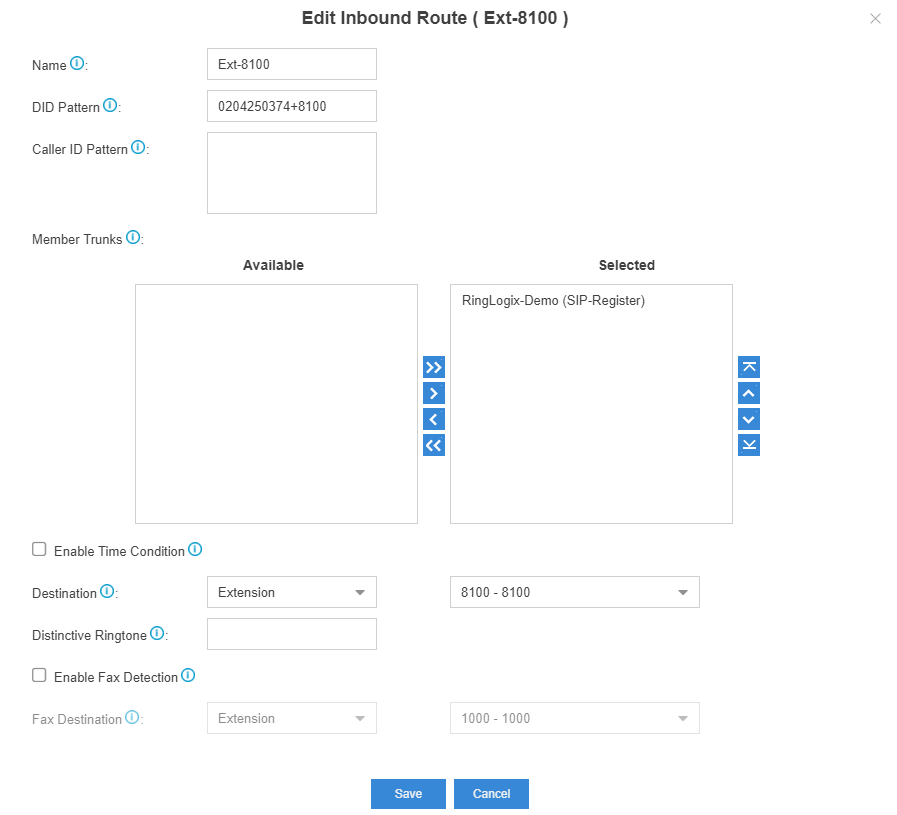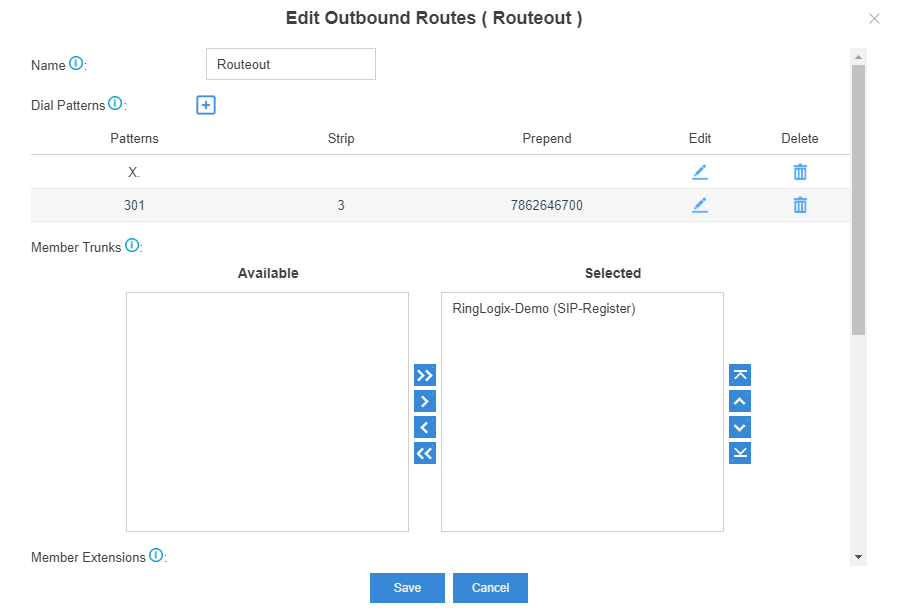Live Chat Software by Kayako |
|
Extension dialing between a Hosted PBX and an External PBX
Posted by Albert Diaz, Last modified by Albert Diaz on 24 April 2019 06:34 PM
|
|
|
The article below describes the concept on how RingLogix partners can setup extension dialing between a RingLogix Hosted PBX and an external PBX (like a 3CX, Avaya, Asterisk, etc.) connected to a RingLogix SIP trunk. Design Concepts Extension Numbering: The simplest way to implement this function is with unique extension numbers on each system. For example, 1XX extensions on the hosted PBX and 2XX extensions on the external PBX. If this is not possible then prefixes can be used for dialing extensions on the other system. For example, 01101 to reach extension 101 on the hosted PBX and 02101 reach extension 101 on the external PBX. How your extensions are numbered will affect the outbound routing configuration for each system. Extension Mapping: To properly route calls between the two systems (and from an external source to an internal extension) you will need to map inbound routes to extension numbers. For this process virtual IDs or real phone numbers will be used. When routing calls from a hosted PBX to an external PBX extension, a virtual ID will be assigned for each extension on the external PBX. The format for these virtual IDs are usually the [siptrunkID]+[ext#]. For example, “02041234567+101” for extension 101 on the external PBX connected to SIP trunk ID 02041234567. When routing calls from an external PBX to a hosted PBX extension, a dedicated DID will be required and assigned to each hosted extension. For this step a DID is required. Outbound Routing and Translations: By default, most PBX systems will try route 3 to 5-digit extension calls internally. Meaning extension calls will NOT be routed externally through a SIP trunk the same way a call to a 10 or 11-digit destination would. To make this work an outbound route matching the [ext#] or [prefix+ext#] will be needed for each target extension on the other system. Outbound routes on the hosted PBX will be created by a RingLogix support technician and will route external extension calls to the SIP trunk used by the external PBX. Outbound routes on the external PBX will need to be setup by the PBX admin and will route matching calls to the SIP trunk. Inbound Extension Routing: Inbound routes will need to be setup on each system for each extension. This way each system knows… “when I get a call for ### destination, route it to ### extension”. On the Hosted PBX you simply create an inbound route for each DID to each extension. On the external PBX you will create an inbound route for each virtual ID to its respective extension. For example, inbound calls to DID/Pattern “02011234567+101” route to extension “101”. | |
|
|


